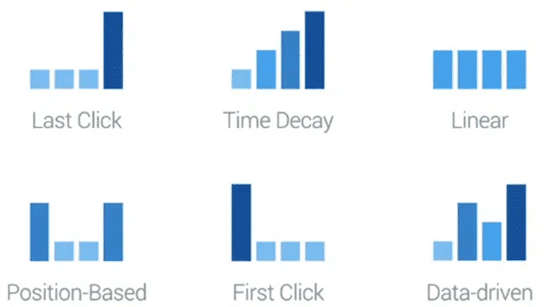There are a handful of common types of attribution modeling. Although all attribution models look at the channels and touchpoints involved in a customer’s decision to convert, each of them weighs those channels and touchpoints differently. Today we will look at what an attribution model is, the different types of models, and why you would use them.
Purpose of Attribution Modeling
The purpose of an attribution model is to assign credit to your marketing channels and touchpoints. This way you can increase your chances of converting more, identify areas of the customer journey that you can improve, more accurately determine the ROI (Return on Investment) for each channel, and much more.
Why Do Attribution Models Matter in Digital Marketing?
Using attribution models helps digital marketers like us better understand which parts of our marketing efforts are driving the most leads or sales for our business.
Attribution models allow you to analyse and assign credit to touchpoints that occur at specific steps of the customer journey. This allows you to look at the customer’s journey and see if you can make any improvements to generate that sale at the end.
As a digital marketer, running multiple campaigns on multiple platforms, it can be difficult to find out which mix of PPC keywords, display ads, SEO efforts, social posts and landing pages are generating leads that move through the sales funnel and down to the conversion path.
This is why we use attribution models: with an attribution model, you can view each customer journey from a bird’s eye view from the starting point to the end purchase and adjust based on that to improve their journey.
What Kinds of Attribution Models Are There?
There are several attribution models that you can try out on different platforms. For today will we be focusing on those that Google Ads currently offers, which are the most frequently found attribution model types available, but we should mention that Google will be sunsetting a few of these models later this year, so be careful with your choices!
Last Click
This gives all the credit for the conversion to the last-clicked ad and corresponding keyword.
First Click
This gives all the credit for the conversion to the first-clicked ad and the corresponding keyword
Time Decay
This gives more credit to the interactions on the ad that happened closer in time to the conversion, compared to those that occurred further back on a customer’s journey.
Linear
This distributes the credit for the conversion equally across all ad interactions on the path.
Position Based
This gives 40% of credit to both the first and last ad interactions and corresponding keywords (80%) with the remaining 20% spread out across the other ad interactions (making a total of 100%)
Data-Driven
This is Google’s own model, launched September 2021. It distributes credit for the conversion based on your previous data for the conversion action. This uses your account’s data to calculate the actual contribution of each interaction across the conversion path. Data-driven model is the default attribution model for most conversions.

Which attribution model are leaving?
There will be 4 models that will be leaving Google ads and Google Analytics later this year. The 4 models are:- First-Click
- Linear
- Time Decay
- Position-Based





